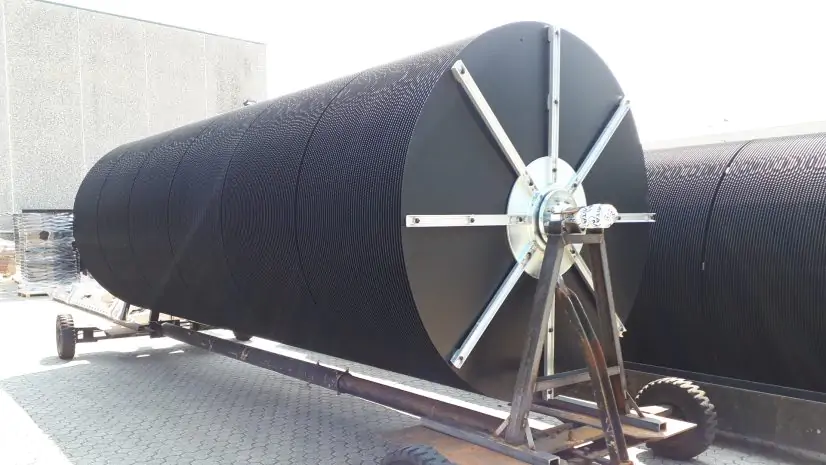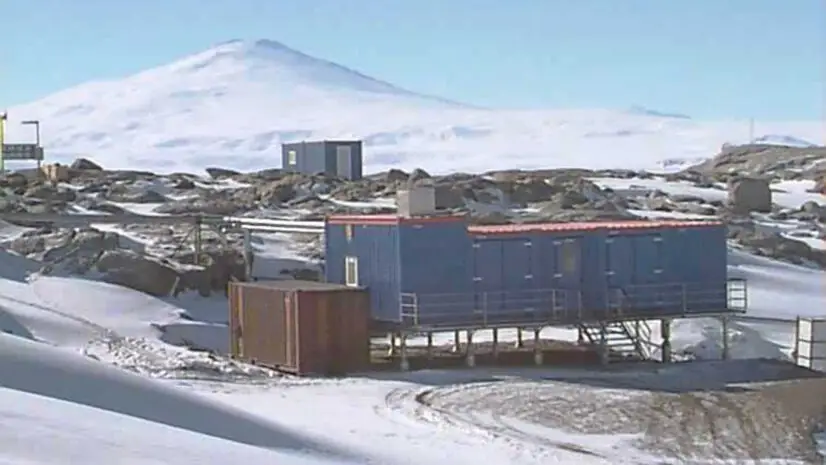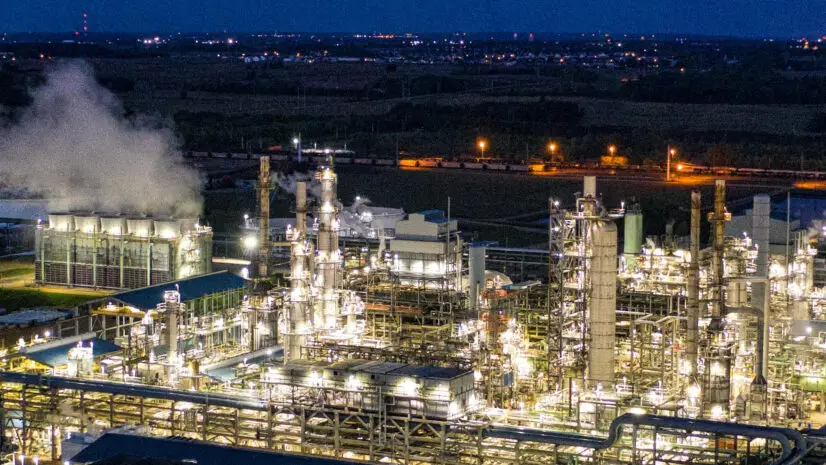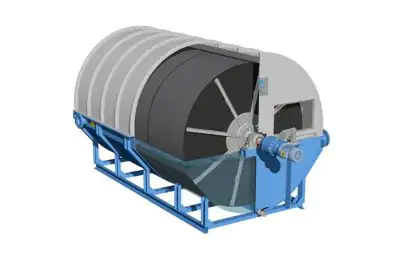Rotating Biological Contactors: Applications

Rotary biological contactors, or rotating biological discs, are a technology that is as simple as it is effective for aerobic biological treatment of civil and industrial wastewater. What are their main applications? In general, wherever BOD and COD need to be removed from water. This is done using plastic discs and bacteria as the main resource for treatment.
Below we see some of the contexts in which there are multiple use cases for the use of these “secondary” systems.
1. Biodiscs in accommodations and infrastructure

1.1. Hotels
Biological oxidation systems can be applied to both hotel facilities with seasonal and annual operations.
The characteristics of such systems are most exploited in the first case (campgrounds, tourist resorts) but in general they respond very effectively to the needs of the sector. In fact, it is always advisable to have systems that are ductile under all loading conditions, both hydraulic and biological, and with the least possible manpower for maintenance and operation.
Compared with other alternative biological purification systems, the biodisc system is less noisy and, because it is compact and can be buried and covered or enclosed within a building, has a better environmental impact.
1.2. Airports
This is one of several areas where biological oxidation biodiscs have been installed over the past few years.
Sometimes, given the predisposition of biological rotors to biologically degrade small amounts of hydrocarbons, it is possible to treat sanitary water together with (storm) water from the yard.
In the latter circumstance, good de-oiling upstream of the rotating biological contactors is essential.
They are also valued for their compactness, modularity (allowing easy plant expansions) and possibility of repositioning.
1.3. Hospitals
The absence of aerosols, and thus of the danger of bacterial air contamination, is certainly the most attractive feature of rotary biological contactors for this type of installation, especially when the system is in close proximity to the hospital unit.
Compared with other alternative biological purification systems, the biodisc one is also less noisy and, due to its compactness and the possibility of burying and covering it or enclosing it within a building, has a better environmental impact.
1.4. Highway service areas
This is one of the applications for which the largest number of installations have been made.
In fact, one of the most important features of biodisc systems is the system’s extraordinary ability to adapt to fluctuations, both in terms of flow rate and composition of the slurry to be treated, which are often very large in a service area.
In particular, in the face of underloading, the system reacts spontaneously without backlash.
In contrast, in plants previously designed and built with activated sludge technology, the organic matter shortage that occurs in the face of underloading caused the process to stall.
Additional advantages offered by biodisc biological oxidation systems are the low maintenance required and little control by refuelers. Finally, the compactness of the biodisc system and its scalability make it ideal for this type of installation.
1.5. Alpine refuges
The plant must be located indoors and in small spaces. In addition, the flow rate of sewage to be treated is extremely discontinuous, and it is normal during off-season periods for there not to be any at all for several days.
The biodisc system is the ideal system for this type of installation: it is extremely compact, can be placed indoors, and has an extraordinary ability to adapt to fluctuations, both in terms of flow rate and composition of the effluent.
Neither an activated sludge system (space and risks from underfeeding; organic matter deficiency, which occurs precisely in the face of underloading, can cause it to block) nor a percolator (space and elevation) is therefore conceivable.
The low electrical power requirements combined with low consumption make it possible to be powered by energy produced from alternative sources (e.g., photovoltaic panels).
1.6. Resorts and campgrounds
In the worst cases, the plant is operational for three or four months of the year with increasing (June to August) and decreasing (August to September) inflow.
The only biological purification system that, sized for maximum capacity, can operate under all conditions and without corrective action is certainly the biodisc system.
In addition to this, it is then essential to have a process that is triggered as quickly as possible upon the influx of the first users or, even, service personnel before opening.
Ask for Information2. Biodiscs in civil establishments and communities

2.1. Civil discharges from establishments
In this application it is necessary to opt for flexible systems that are not affected by weekend breaks or vacation periods.
There is almost always an equalization phase to laminate even partially the flow rate that is normally discharged in 8 to 9 hours. It is then very important to have technology that requires very little maintenance and control and can be operated even by unskilled personnel.
The biodisc biological oxidation system offers definite advantages over other alternative biological purification systems:
- extraordinary ability to adapt to fluctuations, both in terms of flow rate and composition, of the sewage to be treated;
- low installed power and low energy consumption (for the oxidation phase: up to 5-10 times less than alternative systems);
- low maintenance time and ease of operation;
- modularity as the population served increases;
- low noise and absence of aerosols.
2.2. Collective canteens
Treatment with rotating biological contactors is normally proposed because of its ease of management and control in situations where personnel are scarce and unqualified.
The flow rate obviously needs to be equalized since water is discharged only 3 to 4 hours per day. Unlike other biological processes, biodiscs do not suffer if not fed for long periods (weekends, vacations, etc.).
Essential is good pretreatment against fats and solids.
2.3. Small communities
The optimal range for the use of rotating biological contactors in municipal drains is between 30 and 5,000 population equivalents, although installations below and above this range have historically been performed.
In communities with high tourist fluctuation, low energy availability, shortage of personnel, possibility of future increases, proximity of the plant to the population center, etc., the biodisc system offers definite advantages over other alternative biological sewage systems:
- extraordinary ability to adapt to fluctuations, both in terms of flow rate and composition, of the sewage to be treated. In particular, in the face of underloads the system reacts spontaneously without experiencing setbacks, unlike what can happen with plants with activated sludge technology;
- low installed power and low energy consumption (for the oxidation phase: up to 5-10 times less than alternative systems);
- low maintenance and operating costs;
- scalability as the population served increases;
- low noise and absence of aerosols.
2.4. Research expeditions
An unusual use of biodisc biological oxidation systems was chosen, and is still being adopted, by the Italian (ENEA) expedition to Antarctica.
The plant serves about 60 people and is located inside (obviously heated) containers; it is activated in October and remains in operation until February. The request was for an elastic plant that was easy to start up and operate and could withstand a certain salinity of sewage resulting from the use of seawater for toilets.
The biodisc system fully meets these requirements. In addition, the low electrical power requirement and low consumption make it possible to power the rotors with energy produced from alternative sources (e.g., photovoltaic panels).
The application of this system has characteristics akin to those installed to serve mountain huts.
2.5. Sport centers
They may include swimming pools, tennis courts, golf courses, stadiums, etc. Flow rates are always very discontinuous throughout the day and often only for a few days a week. It is therefore necessary to have a system that can operate under different conditions without having to make corrections to the system.
One of the most important features of biodisc systems is precisely the extraordinary ability of the system to adapt to fluctuations, both in terms of flow rate and composition, in the slurry to be treated. In particular, when faced with underloading, the system reacts spontaneously without being affected; on the contrary, in activated sludge technology plants, the shortage of organic matter, which occurs precisely when faced with underloading, can cause them to block.
Inclusion in particular natural environments is also a reason for preference for the biological disc rotor system, which is appreciated for its compactness and the possibility of partially burying and covering it or enclosing it within a building.
2.6. MSW landfill leachate
It can be considered a civilian application, although biological treatment alone is not sufficient to carry out complete purification. It is normally supplemented by a chemical-physical phase and other pre or post treatments.
Given the unpredictability and variability of the water to be treated, rotating biological contactors offer greater guarantees than other biological systems, even in the event of “shock” or poisoning. They have an extraordinary ability to adapt to fluctuations in discharges, both in terms of flow rate and composition. In addition, the process is triggered very quickly.
Ask for Information3. Biodiscs in industrial settings

3.1. Pharmaceutical industries
We have carried out some major installations in this area, including large ones (16 rollers each having a diameter of 2.90 m).
In these cases we are dealing with water that is highly loaded with pollutants, and rotating biological contactors are not the only step in the purification process. The organic substances to be degraded are usually solvents, alcohols, esters, and aldehydes.
The use of biodiscs has the advantage of taking up less space and being more adaptable to changes in influent characteristics, an extremely useful aspect when production undergoes cyclical changes.
Compared with conventional activated sludge systems, biological rotors highlight their simplicity of operation and control, which translates into less need for specialized personnel to manage the treatment plant.
Obviously, antibiotic-producing industries remain excluded from biological treatment.
3.2. Oil & gas
Both refineries and fuel depots are part of this sector.
Since specific articles are known in the literature on the abatement of oils, hydrocarbons and phenols with biological biodisc treatment, this is the industrial sector where the first installations of our system were carried out and where we have the most references.
The water to be treated is both process water (in the case of refineries) and rainwater, tank drainage and “clearing” water (in the case of storage facilities).
A further motivation for using biodisc systems instead of other biological technologies is the discontinuity of the discharge, especially where stormwater is treated. As we know, such technology does not suffer even if they are not fed for long periods.
As in most industrial applications, biodiscs are preceded and followed by other treatment steps; nutrient dosing is always provided for proper functioning of the biological process.
3.3. Dairies and cheese factories
The water to be treated is particularly biodegradable, and often characterized by high loads. Depending on the size of the production facility or the type of limits to be met at discharge, rotating biological contactors can be used as the sole treatment or combined with other biological system.
Typically this involves biodisc roughing and activated sludge finishing. In the former case, the simplicity of plant management and operation, which is essential in small settlements, is emphasized; in the latter case, the readiness of biological rotors to operate even at high specific influent loads.
Compared with traditional systems, rotating biological rotors highlight their compactness, modularity (which makes possible possible expansions at later times), low energy consumption, as well as simplicity of management and control, which translates into less need for specialized personnel.
3.4. Textile industries
Predominantly used in dyeworks, rotary biological contactors have also been employed in printing mills, woolen mills, felt mills, etc.
The key parameter to be degraded in most cases is surfactants, particularly nonionic surfactants. Although it is known that in biodisc oxidation the retention times are not high, excellent percentage abatements of these pollutants have been equally found.
Their small size, ease of operation and low energy consumption are the reasons why they are often preferred to alternative biological purification systems.
Another advantage offered by this system is the significant reduction in the phenomenon associated with foam formation, made possible by the low velocities involved and the absence of air insufflation.
3.5. Slaughterhouses
These are plants with particularly pollutant-laden waters, even where blood is recovered; hence the need to have several treatment stages.
Rotating biological contactors, as is the case in the dairy sector, are often used as the first biological roughing stage, followed by an additional biological oxidation-nitrification stage.
Slaughter activity is often occasional (a few days a week) and for a few hours a day; hence the need to have an always-on system, even if it does not receive influent for days, such as a biodisc system.
In addition, slaughterhouses often require a system that takes up as little space as possible and requires the simplest operation: the biodisc technique largely satisfies both needs.
3.6. Confectionery industries
Confectionery industries can be of a variety of types. Our installations refer to industries that produce baked desserts (cookies, panettone, etc.).
Biodiscs, often combined with other technologies, offer guarantees of smooth operation as different seasonal productions vary by virtue of their flexibility and elasticity.
The modularity of the system, which allows for easy expansions, combined with the simplicity of operation, has prompted several companies and designers to use this solution.
3.7. Laundries
Comparable at times to those in some textile industries, the systems are directed at the degradation of surfactants and organics from different types of washed items (restaurants, hospitals, etc.).
Biological oxidation systems are proposed because of the ease of operation and low supervision required, with no need for specialized personnel.
Since no additives are required (as in chemical-physical treatments), the cost of operation is significantly low. The small space occupied by the biodisc section and their ability to be placed in a wide variety of sites has encouraged consistent development of the system, especially in small and medium-sized laundries.
3.8. Wine industries
Wastewater treatment from these farms is not easy to implement, especially considering that for a couple of months a year (harvesting and racking) organic loads can be more than ten times the annual standard.
In these cases, an excellent solution is to provide an organic biodisc plant, operating year-round and supplementing (organic or not) for the peak months. Doing so results in very low energy consumption and very simple control of the system for much of the year.
3.9. Paper mills
The choice of plant type is influenced by the size of the paper mill and the lower or higher closure of the production cycle (percentage of upstream recycling) that determines the concentration of the influent at the treatment plant.
Rotating biological contactors are mainly adopted in cases with low or medium COD concentrations (more open cycles) or as finishers, downstream of another process, in cases with high concentrations (more closed cycles).
In both cases, biodisc systems are preferred because of their small footprint and because they do not require specialized personnel to operate them.
In mills that process waste paper, an additional advantage is the ease of adaptation to the different types of resulting discharge.
3.10. Chemical industries
The waters to be treated are more or less traceable to those of the pharmaceutical industry, which is a related industry. The companies involved are those that produce substances derived from organic synthesis and therefore very often biodegradable.
Biological rotary contactors are widely used especially in the abatement of hydrocarbons, alcohols, esters, etc.; for these substances the “performance” compared to other biological processes is more obvious.
In this area, rotating biological rotors also offer their ease of adaptation to the various types of the discharge that changes according to the production of the moment. Among the advantages, less space occupied and ease of handling should always be mentioned.
3.11. Animal husbandry
The process varies depending on the kind of animals raised. There are no major problems for cattle, sheep and chickens, while in the case of pigs, combined and highly exaggerated systems are required to fall within legal limits.
The simplicity of management and the little supervision required place biodisc technology as the first to contend with.
In some cases they are used only as roughing treatment since no restrictive discharge limits are required.
Ask for InformationResources
Needs of wastewater treatment
Discover the solution for all needsComparing different technologies
Find out all the different technologiesFind out more
All technical articlesOur Newsletter
Sign up for the MITA Water Technologies newsletter: stay up-to-date on systems for municipal and industrial wastewater treatment and filtration.
